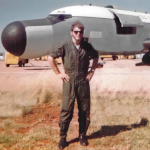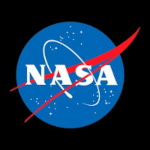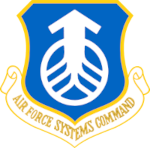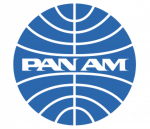




Apollo/Range Instrumentation Aircraft Support of Apollo 17
Michael Zeitfuss - ARIA Communications System Engineer - Pan American World Airways - Aerospace Services Division
Deployment for Translunar Injection Burn (TLO)
The ARIA Operations Control Center (AOCC) went to 24/7 operations when the aircraft entered pre-mission sterilization on 20November 1972.
The original planned T-0 for Apollo 17 was 0253Z/7December 1972.
At T-4.5 hours the AIROPS computer advisor position was manned in the AOCC and in the Technical Laboratory (Bldg 989) AIROPS-IS. The Cape Canaveral Air Force Station Realtime Computer System was also brought on line as backup. By T-3.5 hours all network systems between the AOCC, Bldg 989, and the Cape RTCS were status “Green” and the system was turned over to the AIROPS senior navigator.
Four ARIA departed their staging bases in accordance with the pre-mission plan as shown in Figure 6.
After initial climb-out each of the ARIA went through their standard post take-off checklists. All of the PMEE was turned on to get ready for the mission. The first of the PMEE operators was the HF operator. Contact was made with Cape Canaveral Air Force Station Communications using HF on the guard frequency of 13.218 MHz. The Cape then assigned new frequencies for ARIA control, primary astronaut voice, and a third frequency for astronaut backup. The HF operator then began running “Fox” tapes with the Cape to confirm the TTY system was working properly in anticipation of potential data traffic The Mission Coordinator then contacted ARIA control to report aircraft status. The timing and recorder PMEE operator set the on-board clocks using synchronization signals from WWV. Once the on-board clocks were set then the two data recorders were loaded with the 2-inch magnetic tapes. Then the ½ inch voice recorder was loaded with magnetic tape. The voice and tracking operator checked the operation of the four tracking receivers, made ready the astronaut uplink transmitter (aircraft to Apollo Command Module) and verified that the USB downlink signal data demodulators were ready for astronaut downlink voice and telemetry. The receiver operator verified that the 8 data receivers were working properly. The antenna operator unstowed the 7 ft antenna, then verified proper operation using the hand wheels and the joystick controls. Once all of the PMEE was verified, the Mission Coordinator contacted ARIA Control to report the aircraft status as “Green” and ready for mission support.
T-02:48 (0005Z/7Dec)—ARIA 1 (375) departed Roberts Field heading for its assigned Initial Position (IP)/Test Support Position (TSP) for 72deg launch azimuth
T-01:38 (0115Z/7Dec)—ARIA 4 (329) departed Roberts Field heading for its assigned Initial Position (IP)/Test Support Position (TSP) for 90 deg launch azimuth
T-00:48(0205Z/7Dec)- ARIA 3 (326) departed Ramey AFB heading for its assigned Initial Position (IP)/Test Support Position (TSP) for 90 deg launch azimuth
T-00:23 (0230Z/7Dec)—ARIA 2 (328) departed Roberts Field heading for its assigned Initial Position (IP)/Test Support Position (TSP) for 72deg launch azimuth
ARIA 5 (374)—was held on the ground at Ramey AFB in accordance with pre-mission planning in the event of a launch at end of window or late rev TLI.
T-00:00:30—at T-30 seconds the Apollo 17 launch countdown was halted. For the first time in the history of the Apollo program a launch countdown was halted because of a Saturn V equipment problem. The count was recycled to T-8.5 minutes, the start of the automated sequencer, while NASA went into a fault isolation and corrective action mode.
Four ARIA had completed their step-climb to their assigned altitude of 33-35K, were in long duration cruise of 450 ktn, and were proceeding toward their assigned support positions when the countdown was halted.
For the next two hours NASA determined the root cause of the problem and implemented the necessary corrective actions.
All of the training, all of the simulations, all of the contingency planning that had been part and parcel of the previous eight lunar missions suddenly became very real for the ARIA team.
At 0400Z NASA notified the AOCC that they were going to pick up the count. At about this same time the AOCC transferred responsibility for TLI coverage from ARIA #1 and #2 to ARIA #3 and #4.
T-0 for Apollo 17 occurred at 0533:01Z/7December 1972, 2 hr +40 minutes later than originally planned. The launch azimuth was 091.51 degrees. The RTCS generated new ARIA look angle almanacs for all aircraft. An examination of the data showed that the pre-mission 92 degree azimuth look angle almanacs were satisfactory. All of the ARIA provided full coverage of telemetry and astronaut voice relay of the Apollo spacecraft without any problems (Figure 7).

Figure 6: Relative positions of the five ARIA for support of Apollo 17 TLI
Table 2: ARIA 3 and 4 Test Support Positions (TSP) and data runs for Apollo 17 TLI

ARIA #1 (TN 375) took a pass of the Apollo 17 spacecraft while it was still in its 93.5nmx89.5nm orbit. Acquisition of signal (AOS) occurred as predicted at 0715Z (T+01:42) and continued until loss of signal at 0723Z. Primary tracking was on the Command Module Unified S-Band (USB) link of 2287.5MHz. Good quality data was recorded for the almost 8 minute orbital pass. After taking the orbital pass, ARIA #1 was released from further support and recovered to Barbados landing at 0805Z/7December 1972 after being airborne for eight hours.
ARIA #2 (TN 328) also took an orbital pass on the same revolution as ARIA #1. Acquisition of signal (AOS) occurred as predicted at 0718Z (T+01:45) and continued until loss of signal at 0727Z. Primary tracking was on the Command Module Unified S-Band (USB) link of 2287.5MHz. Good quality data was recorded for the almost 9 minute orbital pass. Realtime retransmission of the USB downlink was sent via LES-6 to the AFETR GBI ground station, then to Cape Canaveral, and then to Houston with excellent results. Houston capcom made several calls thru ARIA #2 at ~T+1:48. After taking the orbital pass, ARIA #2 was released from further support and recovered to Piarco, Trinidad landing at 1115Z/7December 1972 after being airborne for 8 hours and 45 minutes.
ARIA #3 (TN 326) became the primary aircraft covering the beginning of the Trans-Lunar Injection (TLI) burn of the S-IVB upper stage of the Saturn V rocket. Primary tracking was on the Command Module Unified S-Band (USB) link of 2287.5MHz. AOS occurred at 0841:30Z and continued until loss of signal (LOS) at 0850Z. Good quality data was recorded for the 8 minute pass. Astronaut voice relay between ARIA and the Apollo spacecraft using the USB link and then HF from ARIA to the AFETR ground station was excellent quality. The four other downlink telemetry links were also excellent quality for the entire pass. After taking the TLI pass, ARIA #3 was released from further support and recovered to Ramey ABF, Puerto Rico landing at 1020Z/7December 1972 where they had departed 8 hours and 15 minutes earlier.
ARIA #4 (TN 329) became the primary aircraft covering the end of the Trans-Lunar Injection (TLI) burn of the S-IVB upper stage of the Saturn V rocket. Primary tracking was on the Command Module Unified S-Band (USB) link of 2287.5MHz. The tape recorders were started at 0845:30, AOS occurred at 0846Z, with tracking, voice relay, and downlink telemetry recording continuing until end of tape recording capability at 0859:59Z. Good quality data was recorded for the 13 minute pass. Astronaut voice relay between ARIA and the Apollo spacecraft using the USB link and then HF from ARIA to the AFETR ground station was excellent quality. The four other downlink telemetry links were also excellent quality for the entire pass. After taking the TLI pass, ARIA #3 was released from further support and recovered to Piarco, Trinidad landing at 0948Z/7December 1972 after being airborne for 8 hours and 33 minutes.
The ARIA coverage requirement for Project Apollo was from 60 seconds before S-IVB 2nd burn (start of TLI) to 60 seconds after S-IVB cut-off (end of TLI). The Apollo 17 start of burn began at 0845:34.6Z and cut-off occurred ~350 seconds later at 0851:26.1Z on 7December 1972.
ARIA 3 and ARIA 4 provided coverage from 0841:30Z to 0859:59Z significantly exceeding the coverage requirements.
ARIA #1 (TN 375) departed Barbados at 1100Z/7December 1972 and landed at Patrick AFB 1440Z. Total for 7 December was: Roberts Field-TSP-Barbados-Patrick for 13hr+35min crew duty day.
ARIA #2 (TN 328) departed Piarco, Trinidad at 1410Z/8December 1972 and landed at Patrick ABF at 1753Z.
ARIA #3 (TN 326) departed Ramey AFB at 1130Z/7December 1972 and landed at Patrick AFB at 1358Z/7December1972. Total for 7 December was: Ramey-TSP-Ramey-Patrick AFB for 11 hr + 53 minute crew duty day.
ARIA #4 (TN 329) departed Piarco, Trinidad at 1515Z/8 December 1972 and landed at Patrick AFB at 1915Z.
ARIA #5 (TN 374) departed Ramey AFB at 0511Z/7December 1972 and arrived at Patrick AFB at 1155Z.
By 1915Z/8 December 1972 all five ARIA that had deployed to cover TLI had successfully recovered back to Patrick AFB.

Figure 7: ARIA #3 and #4 Telemetry and Voice Relay Coverages for Apollo 17 Translunar Injection Burn (TLI)-7December 1972